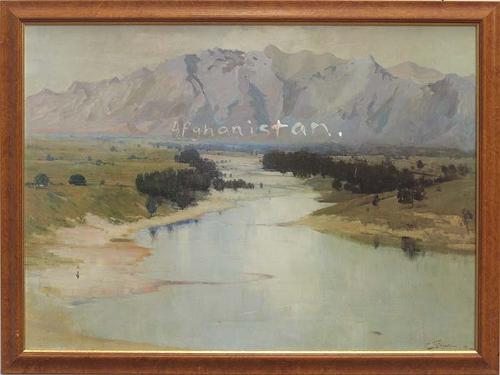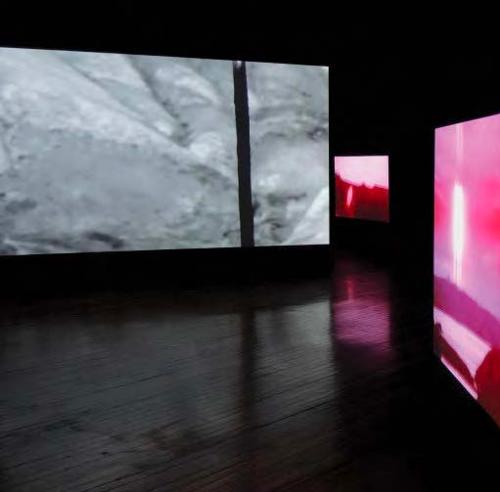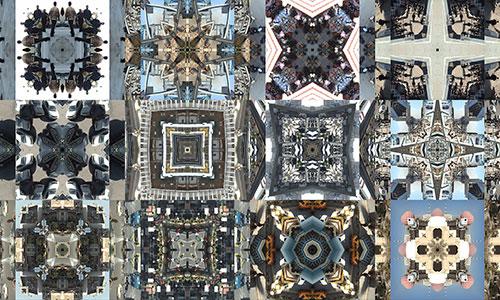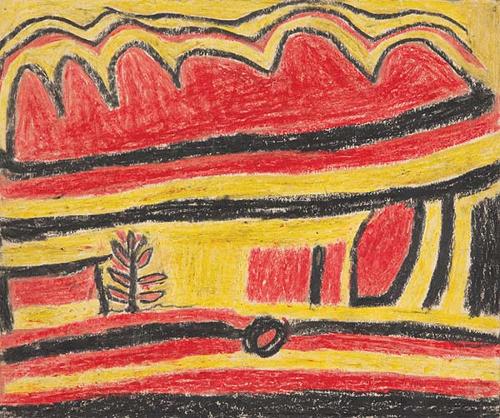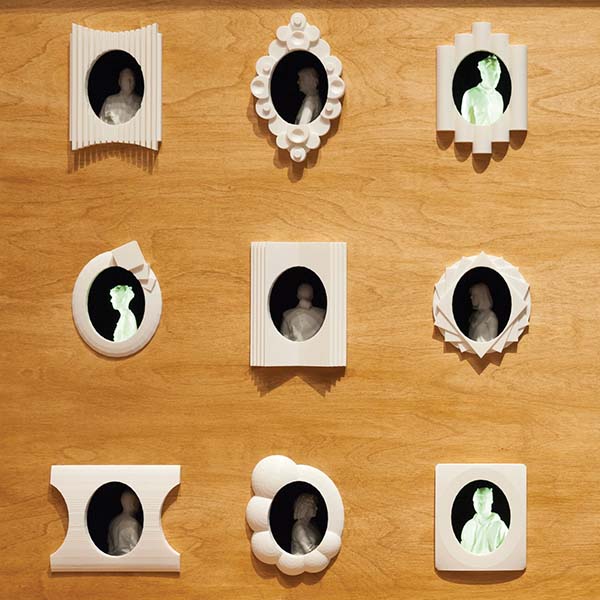
Experimenta Recharge scans the world of media art today, characterising it as increasingly transnational and post-digital in nature. Examining the role of the digital as a pervasive mediator of global culture, the show demonstrates the now commonplace blurring and traversing of boundaries between analogue and digital, actual and virtual.
Maitha Demithan's Aiyal, Sanawat and To The Moon document members of her family using digital knits of flatbed scans of sections of their bodies. The results are otherworldly portraits, radiant in their colour and stillness. Alongside them was Cake Industries’ Simulacrum consisting of miniature busts of fifteen subjects, whose portraits the artists took using 3D printing technology. Nearby, Svenja Kratz’s Contamination of Alice: Instance #8 features a mask of a girl’s face grown from cells containing the DNA of Alice, a girl who died in 1973 and donated her body to science. All these works raise questions around the nature of humanity and its relation to the presence and representation of the human body, particularly when we are faced with the possibilities of being scanned, mapped and encoded.
Shown side-by-side, Acknowledged by Raymond Zada and Cannibal Story by Yunkarra Billy Atkins and Sohna Ariel Hayes are powerful examples of ways in which indigenous Australian culture and history can be advocated and presented using digital animation. Zada’s work animates Adelaide’s street signs, flying them over the city’s statue of Queen Victoria, positioned in Tarntanyangga/Victoria Square, one of the only places in the city to bear a Kaurna name. Cannibal Story, meanwhile, opens an ancient story from Martu elder Atkins to younger generations by presenting it with Hayes’ arresting animation.
Tele Visions Afterlude, a program of video works produced by Emma Ramsay and Alex White, surveys the cultural significance of TV following the switch from analogue to digital broadcasting. Most interesting are the works that demonstrate and critique the medium’s sociality, such as Emile Zile’s Larry Emdur’s Suit, produced from footage of the artist appearing on The Price Is Right, and Ivan Lisyak’s In The End There Is Nothing Left To Say, an episode of Neighbours with all the dialogue removed.
Hidden in its own room Ei Wada’s Toki Ori Ori Nasu: Falling Records provides the exhibition with a monolithic centrepiece. Four computer controlled reel-to-reel tape recorders positioned atop towering plinths gently unspool tape into display cases, the tape flowing over itself and sporadically bedding down to form sedimentary layers of time below. Yawning groans of bass fill the room until, suddenly, the recorders shut off one by one. A peaceful pause follows, the magnitude of which is only felt when abruptly the recorders shunt into rewind and the tape flies back up, accompanied by a warped and speeding rendition of Strauss’ The Blue Danube.
Experimenta Recharge is not concerned purely with technical and formal matters. Rather, it presents an image of media art as engaged with contemporary social, historical, political and environmental issues. It imparts, above all, a sense of the entanglement of the world, mediated by technology and played out in the passing of time.

